Letters from Circe's Island: Dev Log #1
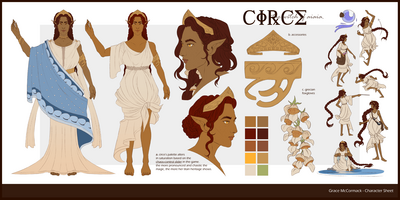



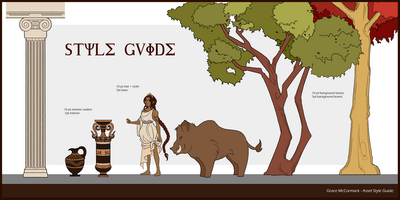
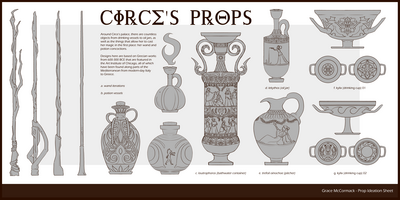
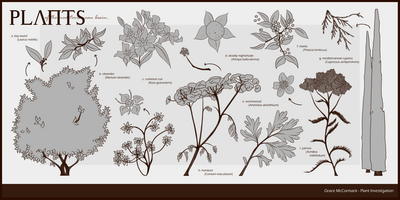
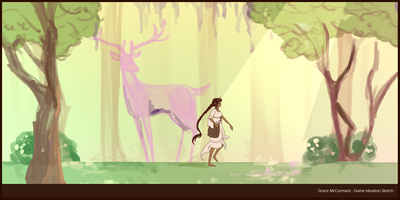
Letters from Circe's Island #1 | Pre-Production by Angelina Grace McCormack
Welcome to Αἰαία, our first development log from Circe's Island!
For a bit of background on this project, the catalyst for the creation of this game is it being our Senior Capstone project for Kent State University's AGD Program. For this class, not only are we tasked with creating a game from scratch, but writing a research essay that displays critical thought and analysis in the pre-production and ideation for the game. With this came the the creation of our thesis and overall promise when it came to the message of our game:
"Throughout classical Grecian literature and later Roman records, the immortal sorceress Circe has been belittled as a product of the male gaze by poets in works such as Homer’s Odyssey, Vergil’s Aeneid, Apollonius Rhodius’ Argonautica, and most notably Ovid’s Metamorphoses. Female creators and consumers have received criticism for bringing up the reduction and villainization of women in modern day media and how it mirrors the sexist portrayals overlooked in the past. To combat and highlight the perpetuation of women as one-dimensional secondary characters in media, Αἰαία [i-aye-yah] centers Circe’s narrative in her own point of view, and brings to life the full potential of her character."
Over the summer, we began preparing for the class early, trying to figure out what exactly it is that we wanted to create. Several ideas were brought forward, but the aspect of creating a game that blended themes of Greek mythology with rewriting a narrative from a woman's lens appeared the most favorable. This idea first came to fruition based on the creation of Madeline Miller's Circe, a 2018 novel that featured the sorceress in a linear narrative that took aspects from several stories that were written about her. However, quite a few creative liberties were made (as one does with fiction), and this work should definitely not be used as a definitive history of the stories that Circe was written into. For example, Miller writes the mortal-turned-god Glaucus as one who gained immortality due to Circe's power, while in Ovid's Metamorphoses, it was he to did it for himself.
Narrative aside, one of the crucial goals for our summer preparation sprint was designing the characters and creating our own take on the world that Circe lived in, beginning with the enchantress herself. Taking inspiration from classical texts and art history, the most important things to include were her auburn hair, and golden eyes that looked like that of a hawk. Additionally, symbolism of the sun and ocean are incorporated in her accessories as a nod to her parentage: Helios the Sun Titan, and Perse, a water nymph who was offspring of Oceanus. Combined with clothing ideation based on resources from Kent State's History of Costume class, Circe's outfits for pre and post-exile were designed.
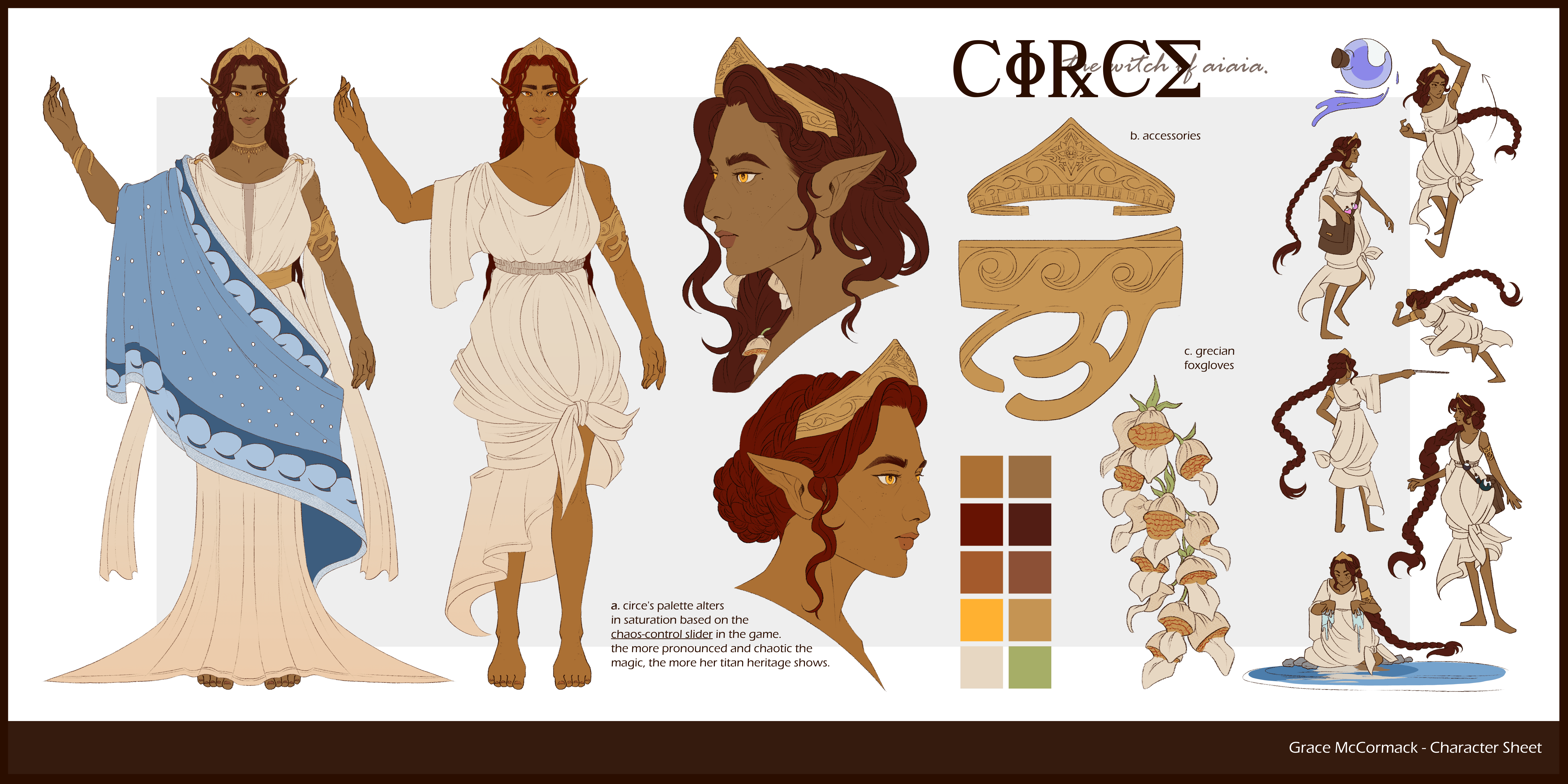
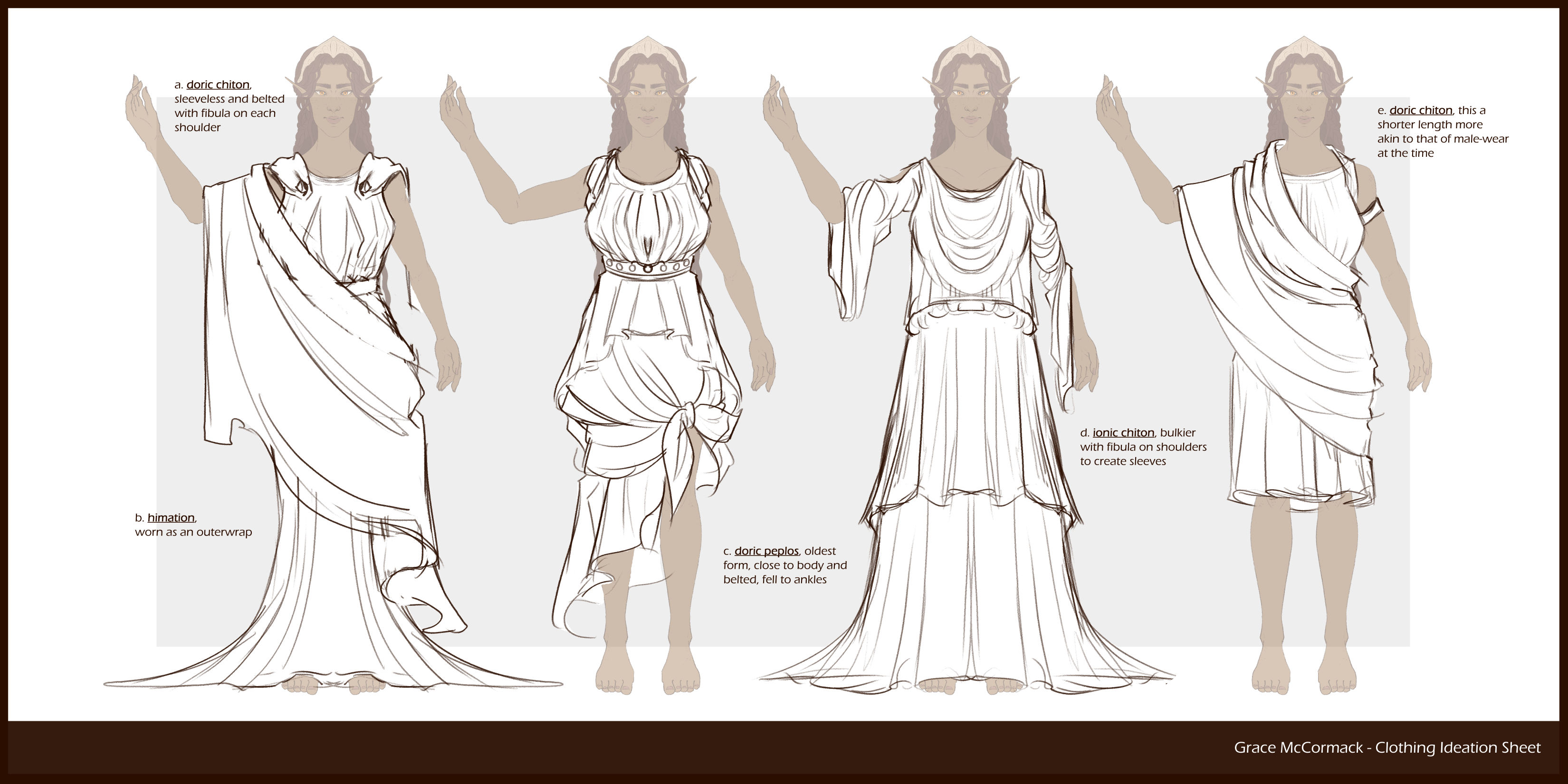
From there, our designs for other characters in the cast were created. When it comes to our reference collecting, it is important to note that we took inspiration from Classical and Archaic Grecian designs of the gods and characters, with only some components taken from later depictions of the cast. There are major differences between the Roman and Greek depictions of the gods, especially when it comes to modern understandings of them, and part of Αἰαία's mission is to highlight that. With that, Hermes and Medea were designed as shown below:
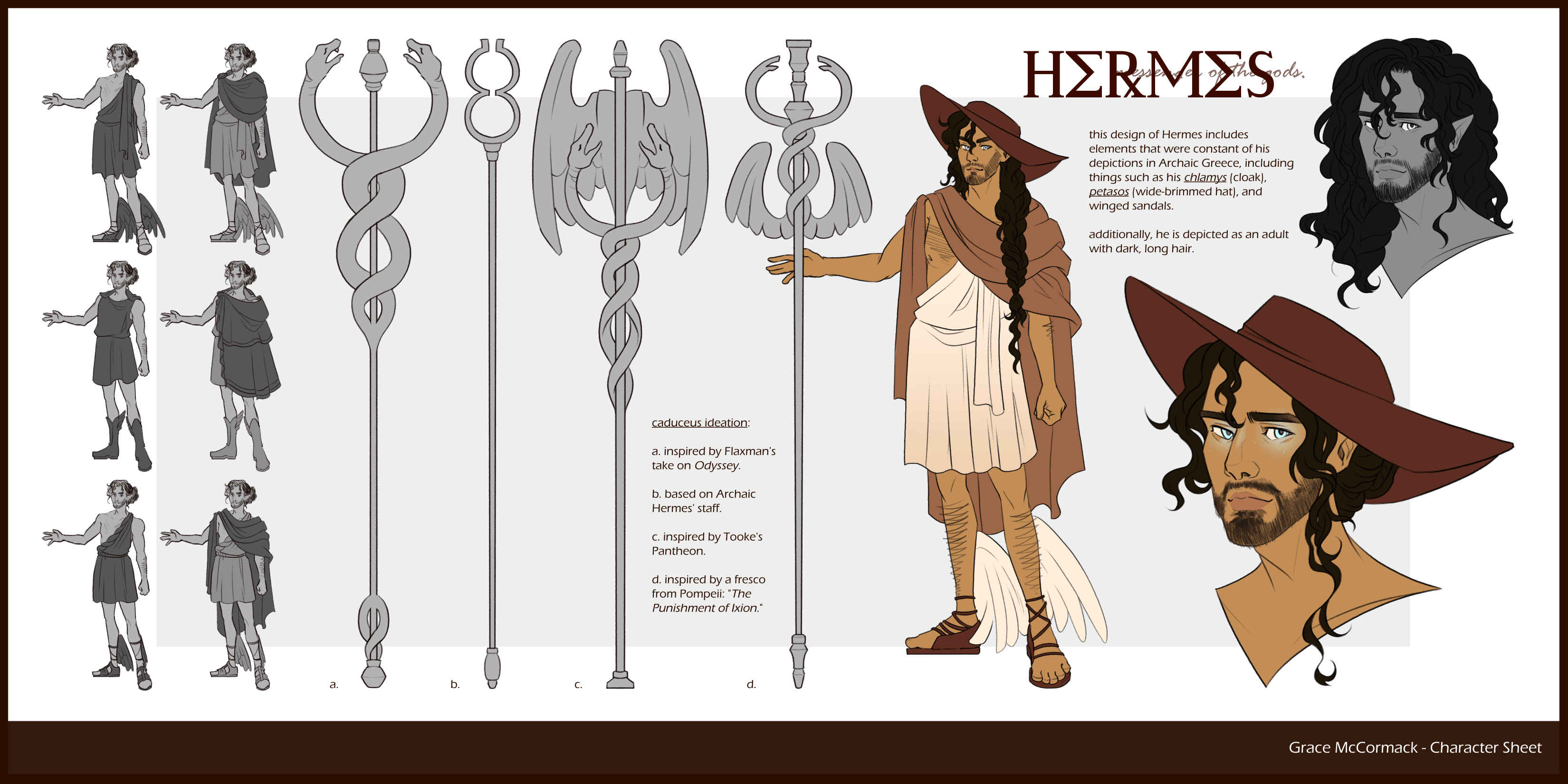
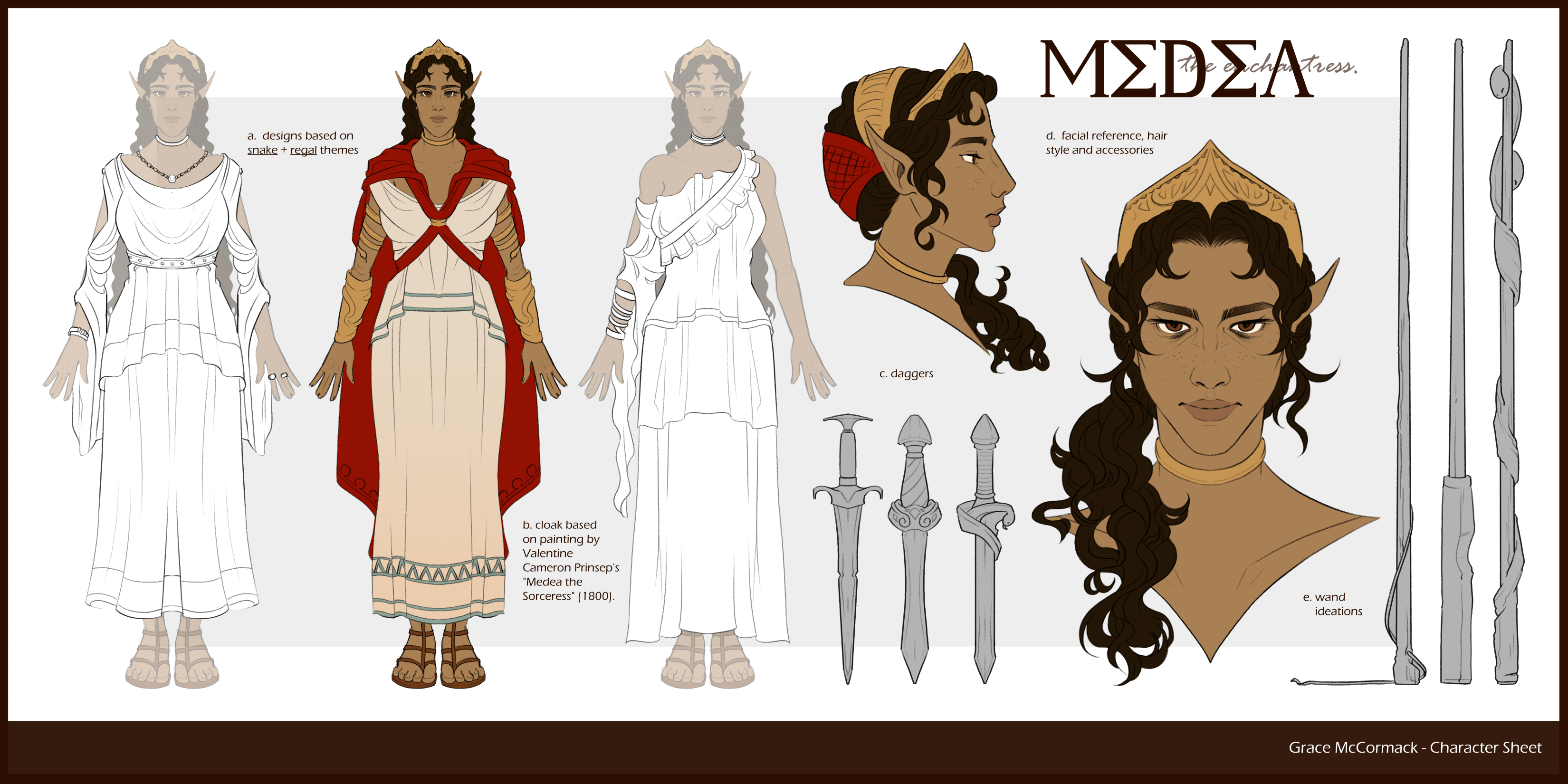
Character designs aside, one other key component of pre-production was the research and ideation of the environment, and the assets that would be created to fill it. In August I was able to go to the Art Institute of Chicago and take a plethora of reference pictures from their Greek art collection, allowing me to start creating designs for objects that would fill Circe's palace. This includes items such as bathwater containers, water pitchers, oil jars, and drinking cups, all of which were meticulously decorated to tell stories.
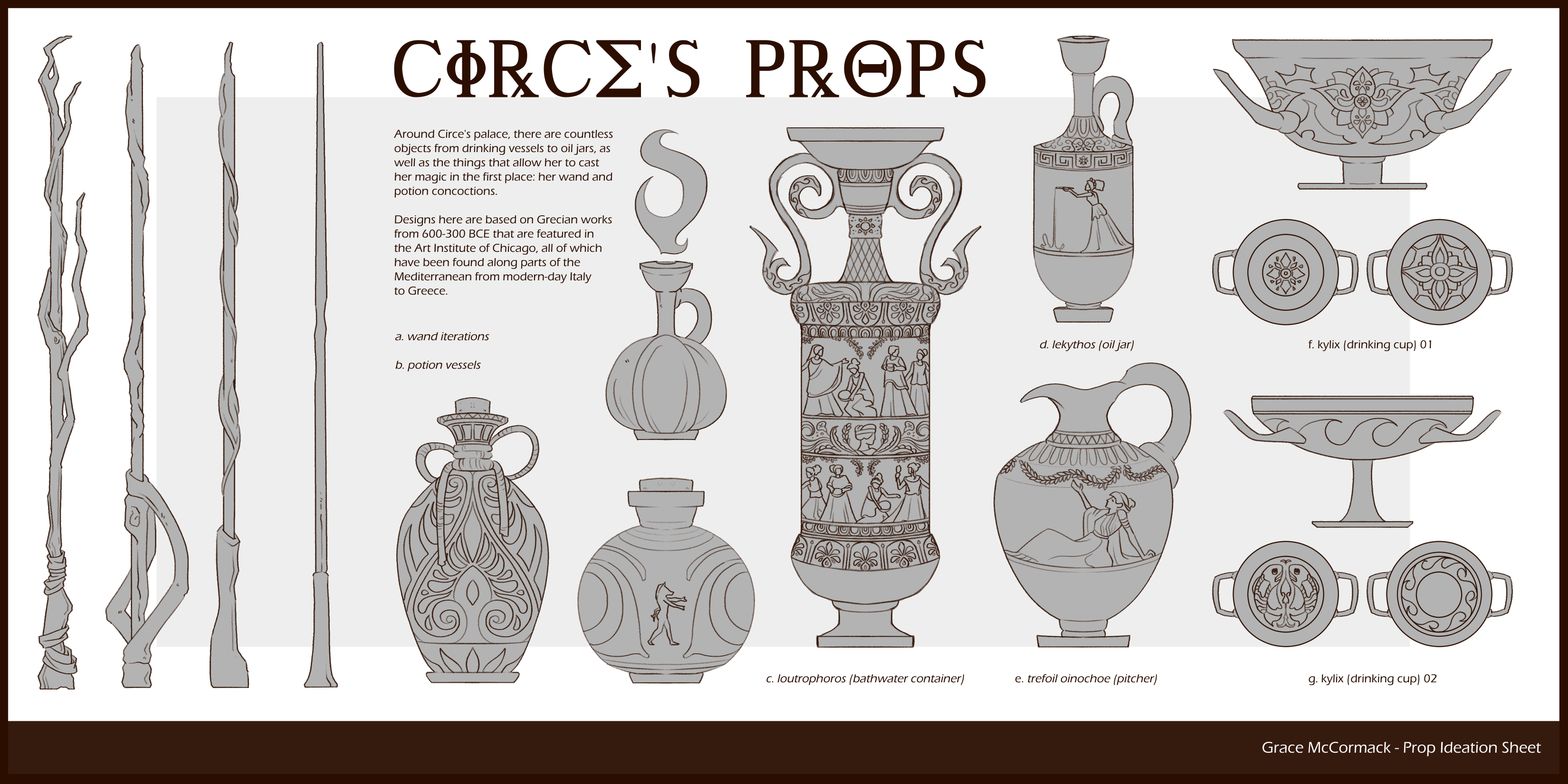
Finally, research on the Mediterranean Basin was another critical part of the pre-production phase. Team member Ty Morris collected a series of plants native to the region that have descript medicinal or poisonous properties that could be used in cultivating Circe's potions for her spells. Call-outs for tinier petaled plants are included in the investigation spread as a means of ideating the sprites that will be shown in the collectables menu. For medicinal flora, Ty included yarrow, wormwood, Mediterranean cypress, bay laurel, and mastic. For poison-focused plants, he included Grecian foxgloves, oleander, deadly nightshade, common rue, and hemlock.
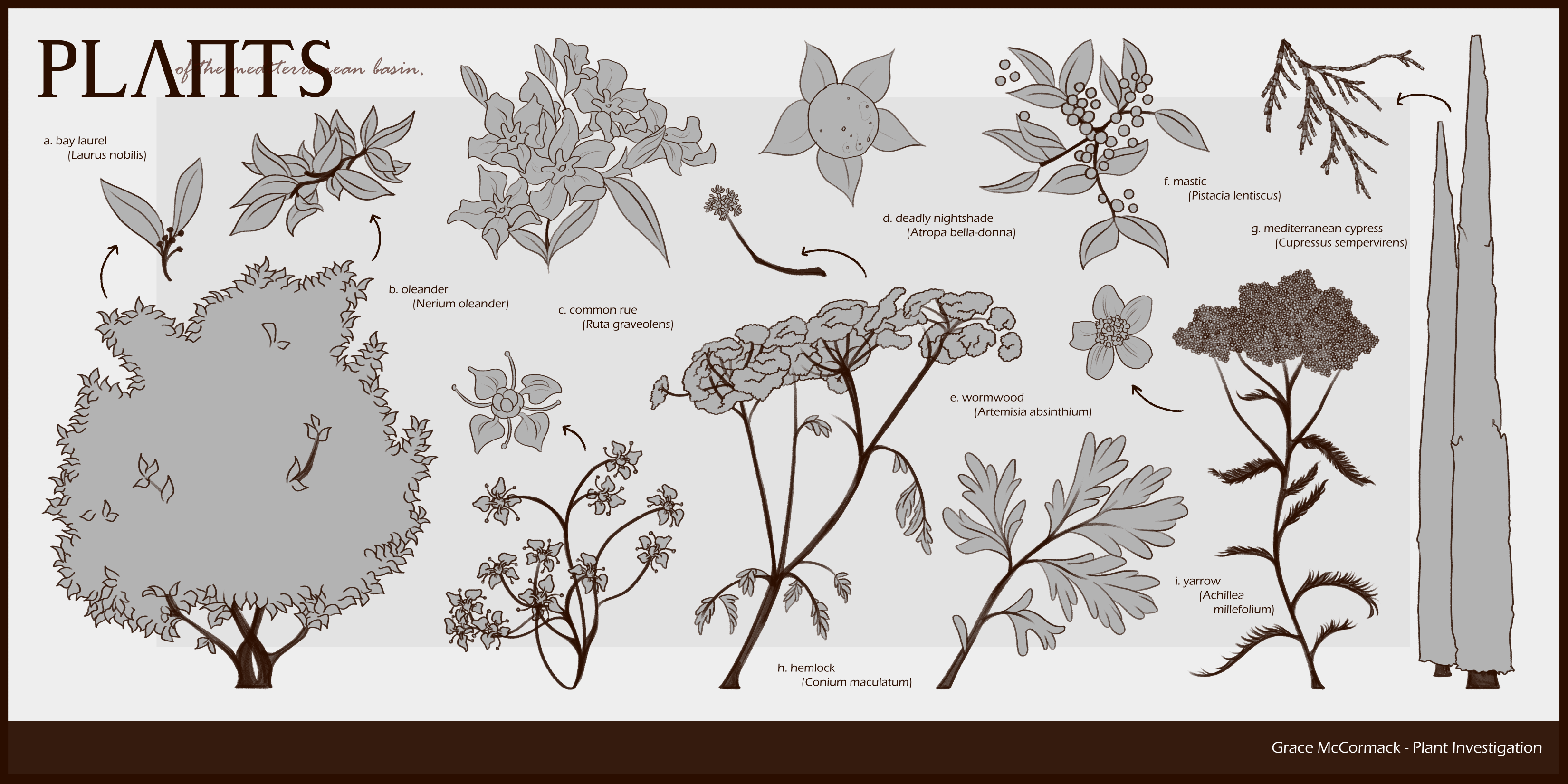
As our first sprint comes to a close on the 24th, we're beginning to think of the bigger picture: what do we want the final game to look like? With inspiration from Nine Sols and my time working on Little Nemo and the Nightmare Fiends, our assets will be made with just flat colors at first, with shading as a stretch goal. The exterior lines on the assets will have a thicker weight to them, while the interior is gentler and allows for more detail. Additionally, color theory and usage from games like Neva will be crucial as we develop the world, especially with their focus on portraying nature as a beautiful, illustrious thing.
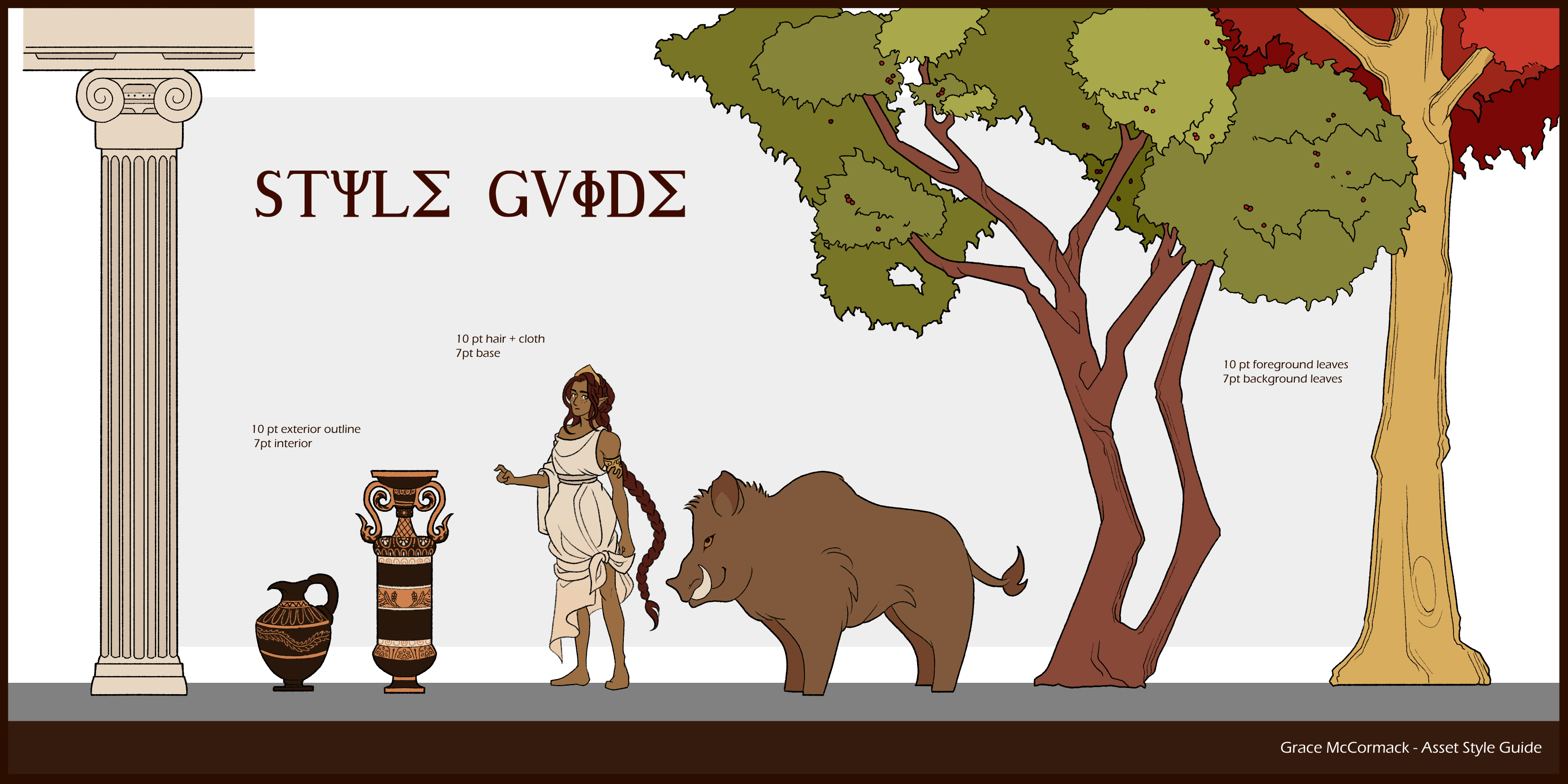

That's all for now from our art pre-production side of things. We'll soon get a dev log up on our narrative design process so you can get a look into how we're approaching our goal of rewriting women through a non-male-centered gaze! Team Circe, out.
Αἰαία
Circe game!
| Status | Prototype |
| Authors | ameliorez, ClownCarCore, EisenIrons, theweze, Ty, Jonah520436, Endoplasmian, dawsonturska |
More posts
- Letters from Circe’s Island: Dev Log #77 days ago
- Letters from Circe’s Island: Dev Log #613 days ago
- Letters from Circe's Island: Dev Log #520 days ago
- Letters From Circe's Island: Dev Log #428 days ago
- Letters from Circe's Island: Dev Log #336 days ago
- Letters from Circe's Island: Dev Log #241 days ago
Leave a comment
Log in with itch.io to leave a comment.